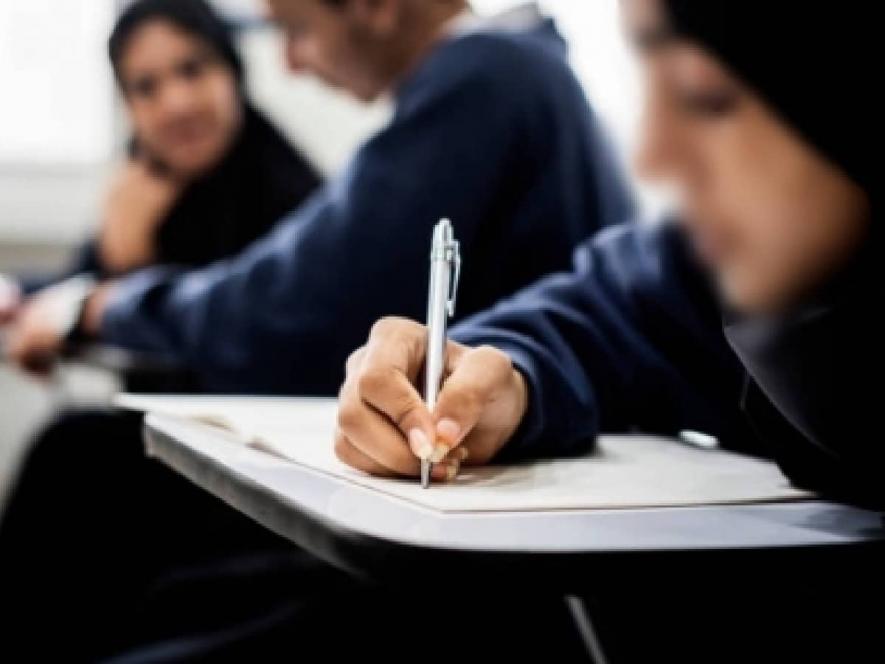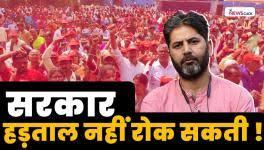AISHE Survey Shows Drop in Enrolment of Muslim Students in Higher Studies

The recently published All India Survey on Higher Education (AISHE) 2020-21 has brought to light certain inconsistencies in the education sector amongst the various marginalised, minority and majority communities of India. On the one hand, enrolment in higher education for Dalits, Adivasis, and Other Backward Castes (OBC) has increased by 4.2%, 11.9%, and 4%, respectively in comparison to the year 2019-20. The data also provided that the upper castes, whose enrolment had been declining since the implementation of Mandal II in the late 2000s, have returned with the highest growth rate of 13.6%.on the other hand, the data for the enrolment of Muslim students has been worrying as a decrease by 8% from 2019-20 has been noted, which means that there has been a decrease by almost 1.8 lakh students in enrolment. This statistic is absolutely alarming as this level of absolute decline has never occurred for any group in the recent past.
The AISHE survey, conducted by the Ministry of Education, thus displays that the Muslim community in India is falling significantly behind other communities in terms of higher education enrolment, painting a bleak picture of the Muslim community. While the COVID-19 pandemic is partly responsible for some of the decline, it also highlights the community's economic challenges, which often force talented students to seek employment after finishing high school rather than pursue higher education.
Statistics for enrolment in higher education
According to the AISHE survey, the estimated total enrolment in higher education is 4,13,80,71, with nearly 91 lakh students in universities and constituent units. Out of the same, women students account for 48.67% of the total enrolment, while the male students make up 51.33%.
According to the report provided by the Hindu, the most significant decline in Muslim enrolment was reported in Uttar Pradesh, with a staggering 36% decrease. Other states that experienced significant declines include Jammu and Kashmir (26%), Maharashtra (8.5%), and Tamil Nadu (8.1%). In Delhi, one in every five Muslim students did not enroll in higher education after passing the Senior School Certificate Examination, casting doubt on the Aam Aadmi Party's (AAP) claims on improvement in education in the national capital. In Uttar Pradesh, where Muslims account for about 20% of the population, their enrollment for higher education stands at a mere 4.5%, despite the state reporting a significant increase in the number of colleges during the year. While the states that have a larger share of the Muslim population account for the higher share of decline, small states too show similar trends, Gujarat (6.1 per cent), Bihar (5.7 per cent) and Karnataka (3.7 per cent). Except in Tamil Nadu, Muslims alone witnessed an absolute decline in their enrollment. Kerala, on the other hand, stands out as the only state where 43% of Muslims pursue higher education. Notably, the Muslims in Kerala enjoy a 10 per cent reservation in government jobs and 12 per cent in educational institutions.
Regarding the marginalised communities, the survey highlighted the success of the OBC community, which constituted 36% of total higher education enrolment in the country, while the scheduled Castes accounted for an additional 14%. Together, these two communities occupy nearly 50% of the seats in universities and colleges. Contrastingly, the Muslim community’s higher education enrolment is only 4.6%, despite comprising over 14% of the country’s population.
Surprisingly, the survey also revealed that Muslim and other marginalized communities have more women students enrolling for higher students than male students, indicating gender related progress for women within these communities.
Presence of Muslim teachers in higher education
The AISHE survey’s findings also shed light on the inadequate presence of Muslim teachers in higher education institutions. As per the data, teachers from the General Category account for 56% of all teachers in India, while OBC, SC, and ST teachers represent 32%, 9%, and 2.5% respectively. In striking disparity, people from the Muslim community only made up around 5.6% of the total teachers.
In terms of gender, the data provided that there were 75 women teachers for every 100 male teachers. Notably, female OBC, SC, and ST teachers fare better than their Muslim counterparts, with 71% and 75% female representation, respectively, compared to only 59 women Muslim teachers per 100 male Muslim teachers. Similarly, in reference to the non-teaching staff, the survey provided that the highest female-to-male ratio is observed among the Other Minority Communities with 85 women per 100 males. In contrast, the Muslim community has the lowest representation, with only 34 females per 100 males.
These survey findings come just five months after the Ministry of Minority Affairs discontinued the Maulana Azad Fellowship, which provided financial support to Muslim students pursuing higher education. Additionally, the previous government in Karnataka revoked the 4% reservation for Muslims ahead of the Assembly election in the state.
How has the state contributed to the pitiful state of the Muslim community in the education sector?
On December 9, 2022, the Union government had announced the union government’s decision to discontinue the Maulana Azad National Fellowship (MANF), a scholarship for students from minority communities, from this academic year. The reason quoted by the government was that the MANF scheme overlapped with various other fellowship schemes for higher educationMany people were outraged by the government's decision, which raised concerns about the government's intention to provide support to the Muslim students. Many Muslim students were taking advantage of the scheme when the government decided to discontinue it. This move may make it even more difficult for them to pursue higher education now, even as the percentage of students being enrolled is already decreasing.
In December 2021, six Hijab-clad Muslim students belonging to Udupi's Government Pre-University College for Girls were barred from attending classes. On March 15, 2022, the High Court of Karnataka had passed a final order upholding the Government Order dated February 2, 2022, and thereby, allowed for restriction of the hijab in educational institutions. The case is yet to be heard in the Supreme Court by a 3- judge bench, as a split judgment had been delivered by the Supreme Court divisive bench in October last year. On January 9, an interim report was published by People’s Union for Civil Liberties (PUCL) -Karnataka, which had undertaken a study titled as “Closing the Gates to Education: Violations of Rights of Muslim women students.” to investigate the impact of the imposed ban on the students. The report provided that the right to education was the first right to be impacted by the hijab ban. The students stressed that they were unable to exercise their right to an education as a result of the decisions they had to make in the wake of the interim order. Many testimonials have been provided by the Muslim females on the hardships faced by them while exercising their right to education.
Thousands of such Muslim girls across the state were robbed of their access to education and a sizable number of women were even unable to appear for their examinations, a report by PUCL Karnataka had revealed. The fact-finding report by PUCL, which was released in September 2022, noted that while there is little to no official data regarding the number of students who were particularly impacted by the aforementioned sequence of events, the government stated that the total dropouts of hijab-wearing girls stand at 1,010 because of the hijab ban.
Furthermore, the removal of the 4% reservation for Muslims by the erstwhile BJP government in Karnataka has also had an adverse impact on the community’s educational prospects. Reservation policies are often seen as essential tools for promoting inclusivity and providing equal opportunities for marginalized communities.
Conclusion
According to the Sachar Committee Report (SCR) submitted in 2006, the educational status of Muslims was comparable to, if not worse than, that of the country's most disadvantaged communities. And since then, their denigration has only intensified. It is also essential to note that while their enrollment rate is low, the Muslim dropout rates stand at 23.1 percent in comparison to the national school dropout average rate of 18.96 percent.
These recent government actions, the current environment of our country, along with the findings of the AISHE survey draw attention to the critical need for focused policies and programs to address the educational inequalities faced by the Muslim community. It is critical to foster a learning atmosphere that encourages and supports Muslim students in their pursuit of higher education.
Efforts should be made to improve access to quality education, provide scholarships and financial aid, and raise Muslim community awareness about higher education opportunities. Furthermore, steps should be taken to address the community's economic challenges, ensuring that young students are not forced to forego higher education due to financial barriers.
This survey also highlighted how higher education institutions ought to prioritize enhancing the representation of Muslim teachers and non-teaching staff. Diverse faculty and staff may contribute to developing a more inclusive learning environment while also serving as role models for Muslim students.
To bridge the educational divide and promote equal opportunities for all communities, including the Muslim community, government bodies, educational institutions, and civil society organizations must collaborate. Only by addressing these issues and understanding that no child should be left behind, unable to access education, can India work toward establishing a more equitable and accessible education system that allows all citizens to thrive and contribute to the nation's progress.
Get the latest reports & analysis with people's perspective on Protests, movements & deep analytical videos, discussions of the current affairs in your Telegram app. Subscribe to NewsClick's Telegram channel & get Real-Time updates on stories, as they get published on our website.
























